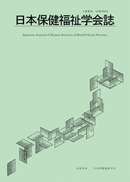Volume 6, Issue 2
Displaying 1-6 of 6 articles from this issue
- |<
- <
- 1
- >
- >|
-
Article type: Article
2000 Volume 6 Issue 2 Pages 1-2
Published: March 31, 2000
Released on J-STAGE: September 15, 2017
Download PDF (177K) -
Article type: Article
2000 Volume 6 Issue 2 Pages 3-6
Published: March 31, 2000
Released on J-STAGE: September 15, 2017
Download PDF (589K) -
Article type: Article
2000 Volume 6 Issue 2 Pages 7-19
Published: March 31, 2000
Released on J-STAGE: September 15, 2017
Download PDF (1241K) -
Article type: Article
2000 Volume 6 Issue 2 Pages 21-27
Published: March 31, 2000
Released on J-STAGE: September 15, 2017
Download PDF (645K) -
Article type: Article
2000 Volume 6 Issue 2 Pages 29-41
Published: March 31, 2000
Released on J-STAGE: September 15, 2017
Download PDF (1272K) -
Article type: Article
2000 Volume 6 Issue 2 Pages 43-49
Published: March 31, 2000
Released on J-STAGE: September 15, 2017
Download PDF (751K)
- |<
- <
- 1
- >
- >|
